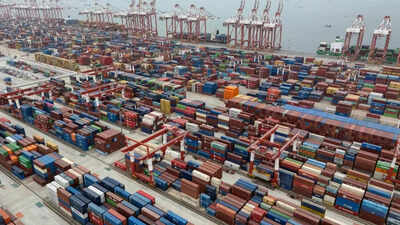
The United States economy is projected to slow to 1.6% in 2025, down from 2.8% in 2024, largely due to the impact of President Donald Trump’s aggressive tariff policies that have disrupted global trade, according to the Organisation for Economic Co-operation and Development (OECD).In its latest global outlook released Tuesday, the Paris-based OECD warned that Trump’s escalating trade measures including broad import taxes and rising uncertainty are weighing heavily on consumer and business confidence. It expects US growth to decline further to 1.5% by 2026, and noted that average US tariff rates have surged from 2.5% to 15.4%, the highest level since 1938.“We have seen a significant increase in trade barriers as well as in economic and trade policy uncertainty. This sharp rise in uncertainty has negatively impacted business and consumer confidence and is set to hold back trade and investment,” said OECD chief economist Álvaro Pereira in an accompanying commentary.The Trump administration has imposed sweeping tariffs, including 10% taxes on imports from nearly all countries, and higher duties on steel, aluminium, and automobiles. Trump has also threatened to double some of these tariffs, further rattling markets. The legal future of these tariffs remains uncertain after a federal court in New York struck down many of them last week, only for an appeals court to temporarily reinstate them.The global economic outlook is also under strain, with the OECD predicting world growth to drop to 2.9% in 2025 and remain there through 2026, down from 3.3% in 2024 and 3.4% in 2023. While the global economy has shown resilience through crises like the COVID-19 pandemic and the war in Ukraine, mounting trade frictions are now a key headwind.China’s economy, already hit by a real estate crisis, is forecast to slow from 5% in 2024 to 4.7% in 2025 and 4.3% in 2026, with Chinese exporters particularly vulnerable to US tariff increases. Beijing is expected to counter some of the pressure through monetary easing and public investment in sectors like manufacturing and elder care.Meanwhile, the eurozone is set to see a modest rebound, with growth projected to rise from 0.8% in 2024 to 1% in 2025, and 1.2% in 2026, aided by anticipated rate cuts from the European Central Bank.The OECD, a group of 38 advanced economies, provides policy recommendations and economic forecasts aimed at promoting global stability and prosperity.(With inputs from agencies)














